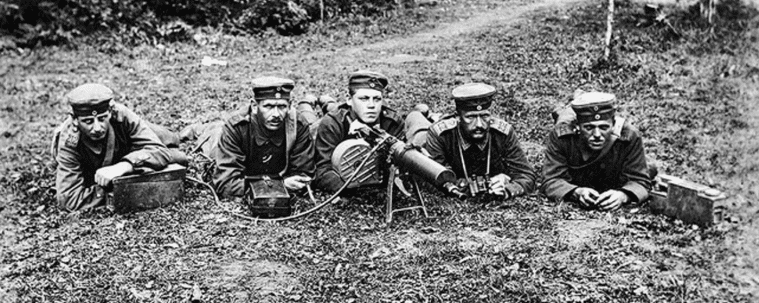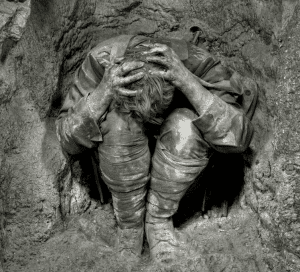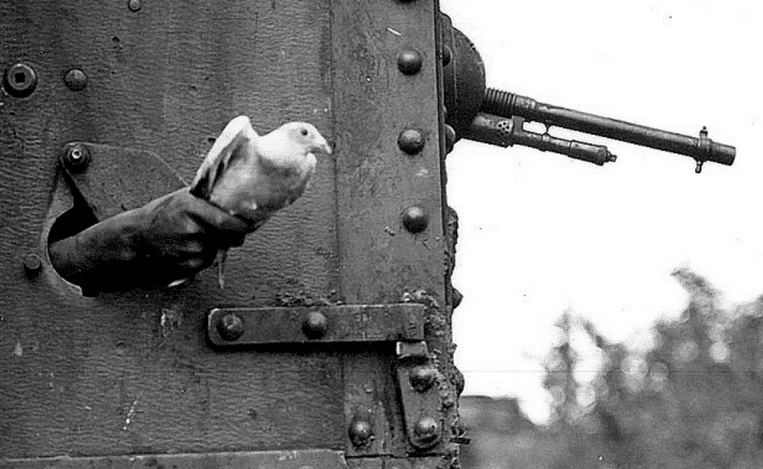So, you started writing a War story and got stuck along the way. Maybe you aren’t sure if your story meets all the obligatory scenes and conventions of its genre. Maybe you’re wondering if your controlling idea or theme addresses the overall values at stake in a War story. Maybe you’re asking, what are the core emotions, subgenres, and audience expectations of a War story? Do you even have a War story?
I’ve completed a great deal of research on War stories and I’m excited to answer these questions and more by sharing what I’ve learned.
Let’s get started.
What is a War story?
Fundamentally, a War story includes a single soldier or group of soldiers preparing for, waiting for, engaging in, and possibly recovering from wartime combat. A war story must have soldiers on a battlefield with the possibility of death. It’s important to note that it’s not every story set in time of war. It has to build and lead to a core battle, which is the equivalent of the “hero at the mercy of the villain” scene for a Thriller or the “proof of love” scene for a Love story. A wartime setting could function as a backdrop for any genre. A War story is not a history lesson on war-time conflict, a bunch of battle sequences strung together, or about a protagonist who is just a bad-ass Terminator robot. A war story is much more.
In War stories, human behavior is dramatized to demonstrate the coexistence of brutality and altruism and how extreme circumstances and trauma bring out the best and the worst in soldiers.
The story dramatizes a political perspective on war. (See subgenres and commentary on politics, below.)
What is the Global Value?
The global value at stake describes the protagonist’s primary change from the beginning of the story to the end. It’s the primary arc you’ll keep your protagonist moving along throughout your story.
The global War story turns on honor and disgrace in the context of war.
Conflict in a War story is expressed on three different levels:
External Conflict arises from fellow soldiers and/or the environmental pressures (weather, enemy forces, terrain). The protagonist is motivated by the expectations and limitations of his team to stay alive, win the battle, and obtain honor via sacrificing for fellow soldiers.
Interpersonal Conflict is between the antagonist and protagonist. The antagonist of a War story is usually the enemy forces and at least one member of a soldier’s own side, often a higher ranking official.
Internal Conflict is a war within the protagonist. This usually follows a Worldview or Morality trajectory (or both) and culminates in a shift in thinking that allows the protagonist to display all their gifts while fighting in the Big Battle. In most stories, the conflict might unfold on one or two of these levels. A War story’s conflict must unfold on all three. Confusing? Let’s take a look at the infographic.
The protagonist doesn’t necessarily have to be defeated with dishonor, but it must be a possible outcome. In a War story, the “negation of the negation” is dishonorable defeat presented as honorable. In other words, trying to convince others that one’s dishonorable behavior in war was honorable is equivalent to a character’s damnation.
War stories arises from the protagonist’s physiological AND emotional needs for safety. The War protagonist’s primary goal isn’t love, self-esteem, or financial rewards. Initially their want is to win the battle and stay alive (external storyline, conscious object of desire). They come to realize their need is to believe that life is worth living but, if they must die, dying with honor is better than dying in disgrace.
What’s the Controlling Idea?
A story’s Controlling Idea (sometimes called the theme) is the lesson you want your reader to come away with. It’s the meaning they will assign to your story.
Each of the main content genres has some generic premise statements. They are either prescriptive–a positive story that shows the reader what to do–or cautionary–a negative story that warns the reader about what not to do.
War stories can have broad-ranging purposes. You need to be absolutely clear which type you’re telling.
Prescriptive:
War is justified and meaningful when waged against a truly evil enemy. (war propaganda, Pro-War subgenre)
Or
War’s meaning emerges from the nobility of the love and self-sacrifice of soldiers for each other. (Credit to Editors Anne Hawley and Leslie Watts)
Or
Honor is gained in war when a soldier sacrifices for their fellow soldier, regardless of victory or defeat in battle.
Cautionary:
War lacks meaning when it is not morally justified. (Anti-War subgenre)
Or
War lacks meaning when leaders are corrupt and dishonor soldiers’ sacrifices on the battlefield. (Credit to Editors Anne Hawley and Leslie Watts)
Or
Honor is lost in war when a soldier refuses to sacrifice themselves for their fellow soldier, regardless of victory or defeat in battle.
What Are the Core Emotions?
Controlling Ideas help the writer elicit core emotions from the audience. Because a War story operates on three levels of conflict, it can elicit several different emotions:
Excitement, Fear
People choose War stories to experience courage and selflessness in the face of intense fear, without actual danger. False bravery.
Satisfaction, Pity, Contempt
They may also choose War stories to experience righteous satisfaction at the proper outcome for the protagonist, whether negative or positive. They want to feel pity for the tested and contempt for the unrepentant but righteous satisfaction when the punishment comes.
What are the essential moments?
Each subgenre has its own essential moments but here is what they all have in common:
A shock (negative or positive) upsets the homeostasis of the protagonist and disrupts their ordinary life. The inciting incident of a War story is an attack that challenges the morals of the protagonist. It must put them under pressure.
The protagonist denies responsibility to respond.
Editor Tip: In overtly refusing the call to change, the protagonist expresses an inner darkness (fear of cowardice and/or fear of uncontrollable rage) or a clinging to unrealistic ideals (a worldview that never allows for the expression of violence). Classic Hero’s Journey.
The protagonist’s refusal of the call complicates the story and the call comes a second time but in a different form, usually as a requirement to fight for someone or something else.
Editor Tip: The War story often compels the protagonist to act without much choice beyond do or die.
Forced to respond, the protagonist and other soldiers lash out according to their positions on the power hierarchy.
The protagonist’s initial strategy to outmaneuver antagonist fails.
The protagonist learns what their antagonist’s object of desire is.
Editor Tip: The real antagonist is often on the “side” of the soldier rather than a member of the enemy forces.
There is a clear “Point of No Return” moment, when the protagonist accepts the inevitability of death.
The protagonist, realizing they must change their approach to attain a measure of victory, undergoes an All Is Lost moment. The All is Lost in a war story is usually cathartic, a moment of acceptance of fate that either compels madness or resignation.
A Big Battle is the story’s core event. This is when the protagonist’s gifts (usually the gifts of all the team members) are expressed or destroyed. They discover their inner moral code or choose the immoral path.
Editor Tip: Make sure the primary antagonist is present in the Big Battle scene of the climax with the intent to see the protagonist fail.
The protagonist is rewarded with at least one level of satisfaction (external, internal or interpersonal) for their sacrifice. They gain honor or dishonor.
What are the essential situations?
Each subgenre has its own essential situations but here is what they all have in common:
The war portrayed must be necessary to your story, not ancillary. As an example, in Platoon, the war is what isolates the men together and forces them to act.
There is a team of soldiers on a battlefield confronting life and death stakes.
Editor Tip: Five is a common cast of predominant characters; the protagonist plus four. As Editor Anne Hawley pointed out, “Odd numbers of characters in any scene will generate more dynamic energy than even numbers.”

There is one protagonist with offshoot characters that embody a multitude of that character’s personality traits. Examples are Achilles in The Iliad, Dienekes in Gates of Fire, and Chris in Platoon.
Editor Tip: Make sure you have a foil for your protagonist within the team. This is the character who embodies the ideals and attributes opposite of your character. As in a Status story, this character exists to show the reader the other path your protagonist could have taken. An example is Mother in A Midnight Clear who represents the emotional and vulnerable traits that the protagonist, Will, is too cynical and skeptical to show. Another example is Bunny in Platoon who represents a complete lack of moral character and thoughtfulness in opposition to sentimental Chris.
The War itself is a seemingly impossible external conflict. The protagonist confronts overwhelming odds. Often, their team is substantially outnumbered.
As in a Horror story, physical violence (or the threat thereof) is ever present.
Editor tip: Use this to heighten the consequences of seemingly minor character actions.
The protagonist has a mentor or sidekick, for better or worse. This character may lead the protagonist astray or encourage moral behavior. In Platoon, Chris has Elias.
The protagonist brings their past into the war in the form of memories, ghosts, photographs, traumas, representational trinkets, etc. Whether they are able to overcome these or lean on these for support in war in order to make the right choices in the end depends upon your subgenre. In Platoon, Chris brings his emotional isolation with him. He clings to his grandmother and refuses to acknowledge his father. He comes to war to rid himself of the privileges he has at home.
The protagonist receives assistance from unexpected sources, the Herald archetypes. Some examples are the characters who tell the protagonist “the truth” such as Rhah pointing out how good and evil are battling for Chris’ soul in Platoon or Eldridge calling out James in The Hurt Locker. Or they are characters who enable the protagonist, like Bunny in Platoon.
The protagonist’s values are tested, and the test culminates in a sacrifice for the team, or, in the negative story, in a failure to make the necessary sacrifice. Platoon’s final battle scene tests Chris’s values by giving him the chance to kill Barnes. Chris chooses to sacrifice his own safety during the battle for his fellow soldiers and he kills Barnes in the name of the good of humanity.
Editor Tip: The protagonist’s self-sacrifice makes little emotional sense unless the relationships among the soldiers has been clearly shown long before this culminating scene. By the end of Platoon, Chris has stopped writing his grandmother, is connected to other soldiers, and acknowledges both Elias and Barnes as father figures.
What are the Subgenres?
Ideologically Pro-War, more externally focused stories
The core values of this subgenre ride between honorable victory and dishonorable defeat. These stories focus on the false idea that it is “us versus them” and that one side (usually American) represents the liberators and freedom fighters. “We are good. They are bad.” These stories often assert that a low status person can become a high status person and hero by virtue of their involvement in battle, that they can finally belong. Soldiers are honored and portrayed as the saviours of humanity. Violence is glorified, justified, and meaningful. Battle sequences might be under-realized and the impact of violence and the cost of war are minimized. These stories carry aspects of the Brotherhood subgenre.
Examples of this story are The Longest Day, Inglorious Bastards, Black Hawk Down, Red Dawn, and The Guns of Navarone.
Ideologically Anti-War, more externally focused stories
The core values of this story range between honorable victory and dishonorable defeat. The explicit use of random violence and repeated terror, combined with characters’ heinous acts as behavioral norms within context of their humanity, dramatize the basic premise that war negatively influences behavior and damages lives. Soldiers are flawed and often behave as their own worst enemies. Suspense techniques are employed to simulate the harsh realities of combat whether there is victory or defeat. War is meaningless and horrific for all of humanity, not just soldiers. These stories include at least one war crime scene and carry aspects of the Brotherhood subgenre.
Examples of the Anti-War story are The Red Badge of Courage, All Quiet on the Western Front, Paths of Glory, A Midnight Clear, The Thin Red Line, Dispatches (the novel on which Full Metal Jacket was based), Platoon, and Bridge On The River Kwai.
Editor Tip: Some critics and scholars argue that no film can qualify as an Anti-War story. For more information, check out this link. Whether or not their assertions apply to novels as well is unclear.
Brotherhood, more internally focused stories
The core values of this subgenre are honor and disgrace regardless of victory or loss in battle. Battle sequences are well realized. The trials of War are the external framework on which the internal genre is hung. Action and battle scenes are only used when needed to drive the internal transformation of the protagonist. Scenes may be longer than those of other subgenres to allow for more dialog and the dramatization of the protagonist’s change arc. These stories carry aspects of either the Pro-War or Anti-War subgenres or both. This story has a secondary genre of Morality or a Morality/Worldview combo in which the protagonist must sacrifice for their fellow soldiers. This story type has a lot in common with the Performance story.
Examples of this story are Gates of Fire and The Deer Hunter.
Do you really want to tell a War story?
The challenge in writing a War story is how to innovate while remaining respectful and truthful; how to make sure the story resonates with audiences and that you don’t accidentally glorify war if you meant to damn it.
In my examination of many War stories, I saw the same story repeated over and over. If you can’t make a strong case for why you’re adding another War story to the world and clearly state how your story will be different, I challenge you to ask yourself why you want to tell a War story in the first place.
If you’re telling a primarily external genre story, you may find that your story is better told through the Performance, Society, or Action Genre. Look at the controlling ideas and value shifts of these stories and see if they are a better fit.
If you’re telling a primarily internal story, you may find your story is better served by using the frameworks of the Morality, Worldview, or Status Genres. Does your story even need ever present threats of violence and horror to work? As you recall, just because it’s set in wartime doesn’t make it a War story. You may even find your story is better served in a different setting than War.
So, if a War story is what best serves your idea, how do you craft it?
By now you know a War story isn’t created by stringing a bunch of battles and carnage together. You’ve seen they’re not a history lesson on the who, what, when, or where of war-time conflict. And you know you are going to have to take your protagonist to emotional extremes as a reaction to war events.
Your story will dramatize how a combat soldier is split between the person they were at home and the person they are at war. Put them through an emotional journey where they are helped by certain members of their team, fight an enemy, destroy part of themself, and suffer a real or metaphorical death and rebirth. Show how individual soldiers react to trauma in different ways, how they struggle with the expected and approved deception of combat with their sense of self and the world outside of combat where they’ve only ever been told to avoid deception. After the trials of horror and pain, they may or may not physically return to the world they came from.
Remember, a soldier isn’t a robot. The journey of a soldier is one of change the hard way. Consider taking your protagonist through the stages of the Kubler-Ross change curve.

From what I’ve read, soldiers in a war zone go through four immutable stages. You could send your protagonist through all four or assign individual stages to various supporting characters.
Stage One: This soldier just arrived. They think they’re in for an adventure and are sure they will survive. They don’t accept advice from senior soldiers or leaders. They’re special and this war gig is manageable without the need for personal change. Or, they underestimate the transformation they need to make to stay alive and honorable. They’re experiencing shock and denial. An example is Chris in the beginning of Platoon.
Stage Two: This soldier has seen combat and is changed by it. They recognize they’re in danger and institute caution. They implement change. Now they are accepting mentorship. In Platoon, Chris starts paying attention to Elias after Chris is accused of falling asleep on his shift and failing to prevent an attack.
Stage Three: They’ve seen enough to know the brutalities of war and the rules for staying alive. They are willing to share useful information with others. In Platoon, King, Elias, Rhah, and Lerner are all at this stage.
Stage Four: The soldier believes they are more likely to die than live through the war. They’ve seen the unexpected and horrific over a long period of time and now believe they’ve cheated death and luck longer than they deserve. In Platoon, Barnes reaches this state after he kills Elias.
Stage Five: Real soldiers rarely get clear resolutions but our protagonists require them. A War story must deliver meaning by dramatizing how the protagonist comes to integrate their experiences in war, even if it is in the short-term. In Platoon, Chris gives a monologue in the helicopter as he’s lifted off the battlefield that explains both his short-term and long-time thinking.
No matter which stage your protagonist is in, find what could disturb them via the real horrors of war. Is it their fellow soldiers raping, pillaging, killing, and burning civilians? Is it prostitution, a crisis of faith, insubordination, cruel punishment, irreconcilable moral choices? All of it? Mine those events for opportunities to create misinformation and misunderstandings for which your protagonist must contend. Your protagonist is likely hiding something crucial about themselves from their team and maybe something from their people at home. Exploit that.
Find what is truly beautiful and meaningful to the protagonist. Find ways to represent those values in external form. Some examples might be in an animal (“save the cat”), a civilian (mother protecting a child), photograph of a loved one (Betsy back home), religious trinket (pocket Buddha statue), or nature (a crushed flower).

Final Thoughts?
Do your research or be consistent with your world building if your story is set in a fantasy setting. Know the following:
Social customs, landscapes, and costumes of the time period
Daily routines of soldiers, their slang, profanity, and communication patterns
Communication devices and transportation methods
Cause of the war and precipitating events
Key figures in the war and which outcome you want to highlight
Weaponry
Editor Tip: Spare us the weaponry lecture or gun porn (specs display). In the context of story, this is exposition and unnecessary detail. What do I mean by that? It’s boring. Good writers skip the boring parts.
On Politics:
If you find a way to avoid becoming polemic in your War story, you’ll be the first I’ve ever seen. You can try the “neutral as possible” approach to your story. After all, if you really understand the horrors of war, you won’t want to support the violence, but what about supporting individual soldiers fighting a war? Can you write a story that is Anti-War but pro-soldier? Is it possible? Or maybe you want to make a political point. If so, make sure you are well-informed. Know the political atmosphere and be very specific about what you want your audience to believe. Even if your story has a fantasy or sci-fi setting, politics apply.
On Moving to the Next Level in Your Writing:
Now you have the basics of the War Genre and are ready to finish that story. When you’re ready for an editor, please contact me for a consultation on your work.
I hope I’ve been able to help you with your story and I wish you the best of luck and hard work with your writing.
For more discussions on war stories, check out the excellent Editor Roundtable Podcasts on The Hurt Locker and A Midnight Clear.
Here is a list of War novel suggestions. I’ll add Bring Out the Dog to that list.
Suggested readings: How to Tell a True War Story, On Writing the War, and Write a War Story.
This post originally appeared at storygrid.com where I am a regular contributor for the Fundamental Fridays Series.

Thank you ever so much for providing this guidance. As you know, this comports with C.G. Jung and Joseph Campbell, as well as Oliver Stone in his approach to writing ‘Platoon’, and it resonates as sound litetary instruction to me. I’m a Vietnam Combat Vet, and the information you’ve provided I shall share with our Vietnam Veterans group. We are being encouraged to write about our experiences, and some don’t know how to go about it. This will certainly help. Thank you!
C.T. Clements
I specialize in helping people write their nonfiction stories and used to be a mental health therapist. Should anyone in your group need assistance in writing around the tough topics of war, I’d be happy to assist.